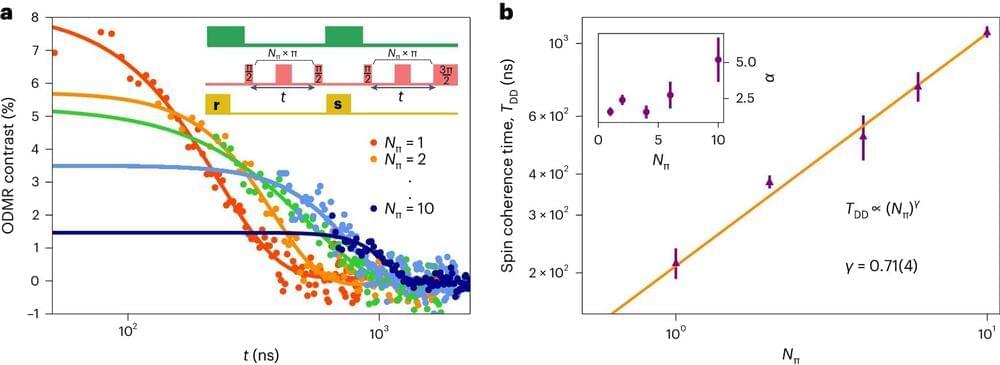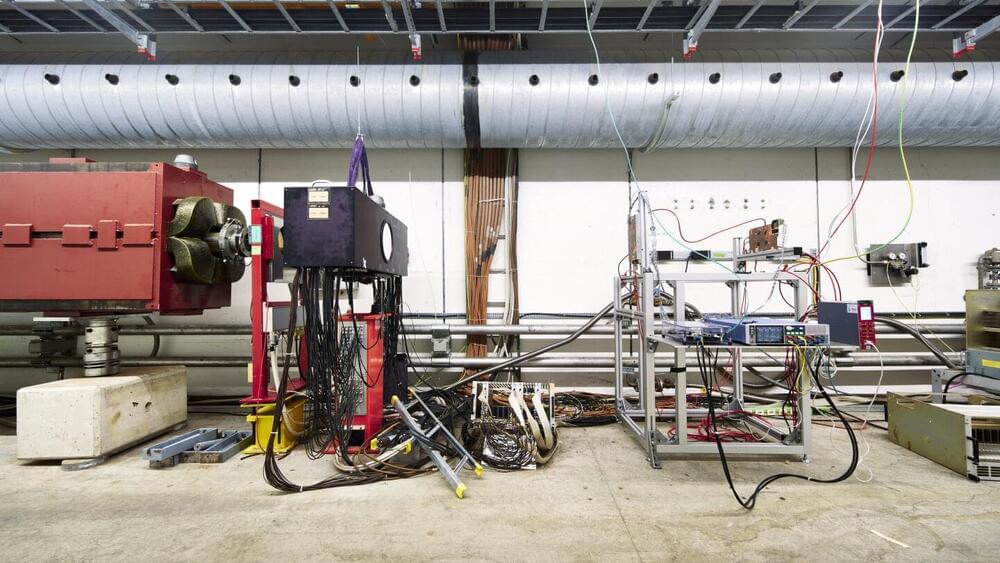UNSW quantum engineers have developed a new amplifier that could help other scientists search for elusive dark matter particles.
Category: particle physics – Page 219
Neutrons Illuminate the Mysteries of Space Glass
Researchers have developed techniques to manufacture different types of glass in space, uncovering potential for advancements in optical technology.
Thanks to human ingenuity and zero gravity, we reap important benefits from science in space. Consider smartphones with built-in navigation systems and cameras.
Such transformational technologies seem to blend into the rhythm of our everyday lives overnight. But they emerged from years of discoveries and developments of materials that can withstand harsh environments outside our atmosphere. They evolved from decades of laying foundations in basic science to understand how atoms behave in different materials under different conditions.

New theory of gravity solves accelerating universe
The universe is expanding at an accelerating rate but Einstein’s theory of General Relativity and our knowledge of particle physics predict that this shouldn’t be happening. Most cosmologists pin their hopes on Dark Energy to solve the problem. But, as Claudia de Rham argues, Einstein’s theory of gravity is incorrect over cosmic scales, her new theory of Massive Gravity limits gravity’s force in this regime, explains why acceleration is happening, and eliminates the need for Dark Energy.
You can see Claudia de Rham live, debating in ‘Dark Energy and The Universe’ alongside Priya Natarajan and Chris Lintott and ‘Faster Than Light’ with Tim Maudlin and João Magueijo at the upcoming HowTheLightGetsIn Festival on May 24th-27th in Hay-on-Wye.
This article is presented in association with Closer To Truth, an esteemed partner for the 2024 HowTheLightGetsIn Festival.

Quantum entanglement expands to city-sized networks
The delicate nature of quantum information means it does not travel well. A quantum Internet therefore needs devices known as quantum repeaters to swap entanglement between quantum bits, or qubits, at intermediate points. Several researchers have taken steps towards this goal by distributing entanglement between multiple nodes.
In 2020, for example, Xiao-Hui Bao and colleagues in Jian-Wei Pan’s group at the University of Science and Technology of China (USTC) entangled two ensembles of rubidium-87 atoms in vapour cells using photons that had passed down 50 km of commercial optical fibre. Creating a functional quantum repeater is more complex, however: “A lot of these works that talk about distribution over 50,100 or 200 kilometres are just talking about sending out entangled photons, not about interfacing with a fully quantum network at the other side,” explains Can Knaut, a PhD student at Harvard University and a member of the US team.

Quantum tunnels allow particles to break the light-speed barrier
In the fascinating realm of quantum physics, particles seem to defy the laws of classical mechanics, exhibiting mind-bending phenomena that challenge our understanding of the universe. One such phenomenon is quantum tunneling.
In quantum tunnels, particles appear to move faster than the speed of light, seemingly breaking the fundamental rules set by Einstein’s theory of relativity.
However, a group of physicists from TU Darmstadt has proposed a new method to measure the time it takes for particles to tunnel, suggesting that previous experiments may have been inaccurate.
This Interactive Museum Concept Lets You Experience Sound Paintings
In February, we covered a curious setup that allows you to control digital particles in real time by blowing air into a sensor, created by visual artist Steven Mark Kübler. But what if you had a whole museum of such unusual interactive artworks?
This is what Kübler has been wondering as well. He presented a concept of a room filled with sound paintings manipulated with viewers’ actions. You can see him blowing on the sensor to make particles in a tank-like container splash and part like water. The experience was created using Arduino’s controller and the TouchDesigner visual development platform.

What Lies Beyond the Observable Universe?
Inflation: The leading theory for the universe’s earliest moments, cosmic inflation, proposes that the universe underwent a brief period of exponential expansion an instant after the Big Bang. This process would have enlarged a minuscule volume of space to a tremendous size, much larger than our observable universe. Inflation neatly explains the flatness and uniformity we observe. But it also suggests that our entire observable universe is a tiny bubble in a vast inflated expanse.
Infinite replicas: If the universe is truly infinite, then everything that occurs within our observable universe must recur an infinite number of times beyond our cosmic horizon. The number of possible particle configurations in any finite volume is large but limited. In an infinite expanse, each configuration, no matter how unlikely, will be realized somewhere, and not just once but an infinite number of times. There would be infinite copies of our observable universe, infinite Milky Way galaxies, infinite Earths, and even infinite versions of you pondering this article. It’s a dizzying but inevitable consequence of an endless cosmos.


Scientists discover single atom defect in 2D material can hold quantum information at room temperature
Scientists have discovered that a “single atomic defect” in a layered 2D material can hold onto quantum information for microseconds at room temperature, underscoring the potential of 2D materials in advancing quantum technologies.
The defect, found by researchers from the Universities of Manchester and Cambridge using a thin material called hexagonal boron nitride (hBN), demonstrates spin coherence—a property where an electronic spin can retain quantum information —under ambient conditions. They also found that these spins can be controlled with light.
Up until now, only a few solid-state materials have been able to do this, marking a significant step forward in quantum technologies.

NA64 uses the high-energy SPS muon beam to search for dark matter
The NA64 experiment started operations at CERN’s SPS North Area in 2016. Its aim is to search for unknown particles from a hypothetical “dark sector.” For these searches, NA64 directs an electron beam onto a fixed target. Researchers then look for unknown dark sector particles produced by collisions between the beam’s electrons and the target’s atomic nuclei.